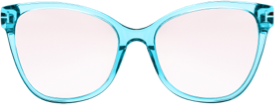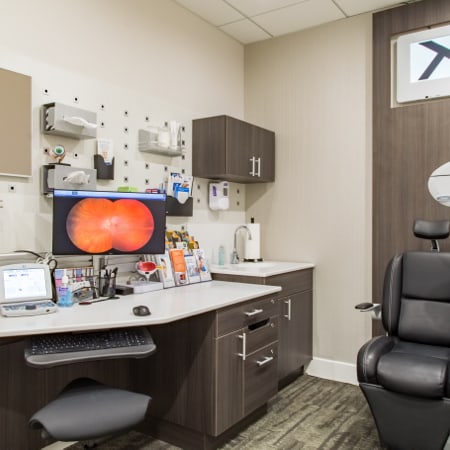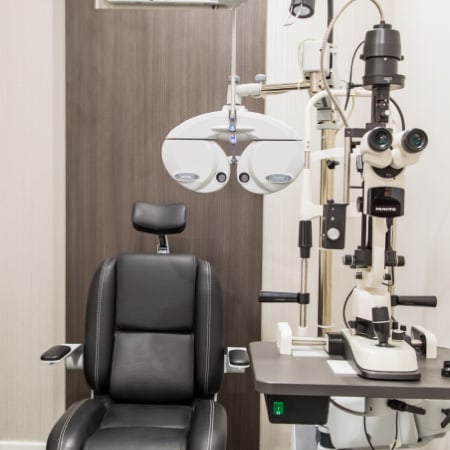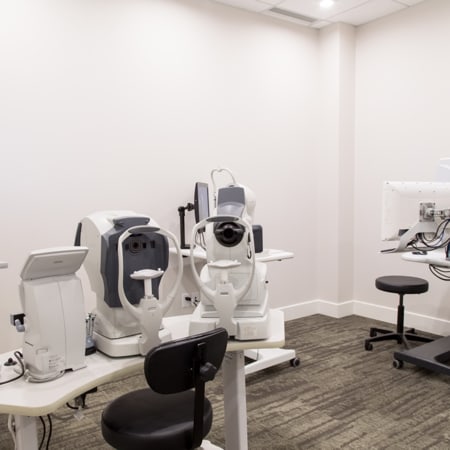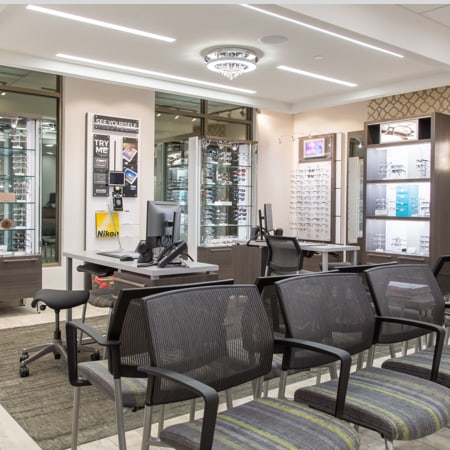You’ve probably noticed your eyes feeling scratchy and uncomfortable after spending hours staring at your computer screen or scrolling through your phone. That burning sensation isn’t just in your head, it’s a real response to how digital devices change the way your eyes work. Bluewater Optometry sees many patients who develop dry eye symptoms from increased screen time in our modern digital world.
Yes, screen time does cause dry eyes by reducing your natural blink rate and disrupting the tear film that keeps your eyes moist and comfortable. When you focus on screens, you blink about three times less than normal, which means your tears don’t spread properly across your eye surface. Professional dry eye treatment can help address these symptoms and their underlying causes.
How Screen Time Affects Your Eyes
Your eyes depend on a steady supply of fresh tears to stay comfortable and clear. When you use digital devices, this natural process gets disrupted in ways that can make your eyes feel dry and irritated. Being familiar with digital eye strain can help you recognize why your symptoms develop.
The Blinking Connection
Normally, you blink about 15 to 20 times per minute without thinking about it. Each blink spreads a thin layer of tears across your eye surface, washing away debris and keeping everything moist. When you’re focused on a screen, your blink rate drops to just 5 to 7 times per minute.
These fewer blinks mean your tears don’t get distributed properly across your eyes. The tear film starts to break up and evaporate, leaving dry spots on your eye surface. That’s why your eyes feel gritty or uncomfortable after working on your computer for a few hours.
Changes in Tear Composition
Extended screen time doesn’t just reduce how often you blink, it also changes the quality of your tears. Your tear film has three layers: oil, water, and mucus. The oil layer prevents tears from evaporating too quickly.
When you spend long periods staring at screens, the glands that produce the oil layer can become less active. Without enough oil, your tears evaporate faster, leaving your eyes feeling dry even when you do blink normally. Meibomian glands play an important role in maintaining healthy tear composition.
Signs Your Screen Time Is Causing Dry Eyes
Recognizing dry eye symptoms early can help you take action before the discomfort becomes a daily problem. Your eyes give you clear signals when screen time is affecting them:
- Blurry vision that clears when you blink
- Burning or stinging sensations in your eyes
- Feeling like sand or grit is stuck in your eye
- Eye fatigue that gets worse throughout the day
- Increased sensitivity to bright lights
If these symptoms persist despite home remedies, schedule an appointment for a comprehensive evaluation of your symptoms.
Why Modern Digital Habits Make Dry Eyes Worse
Today’s lifestyle involves more screen time than ever before. You might check your phone first thing in the morning, work on a computer all day, then watch TV or scroll through social media in the evening.
Multiple Device Usage
Switching between your phone, tablet, and computer throughout the day puts extra strain on your eyes. Each device sits at a different distance and requires your eyes to refocus constantly. Smartphones and tablets encourage you to hold them closer to your face, which makes your eyes work harder to maintain focus.
This constant refocusing combined with reduced blinking creates the perfect conditions for dry eye symptoms to develop and worsen throughout your day.
Environmental Factors
Indoor environments often have low humidity levels, especially during winter months when heating systems dry out the air. Air conditioning and fans create drafts that can increase tear evaporation. Poor lighting forces you to strain your eyes more when looking at screens.
These environmental factors work together with your screen habits to make dry eye symptoms more severe and longer-lasting. Being aware of dry eye causes and symptoms can help you identify contributing factors in your environment.

Simple Ways to Protect Your Eyes During Screen Time
You don’t have to give up your digital devices to find relief from dry eyes. Small changes to how you use screens can make a big difference in your comfort level.
The 20-20-20 Rule & Other Break Strategies
Every 20 minutes, look at something 20 feet away for at least 20 seconds. This gives your focusing muscles a break and reminds you to blink more naturally. Set a phone alarm or use computer software that reminds you to take these breaks.
During your breaks, make a conscious effort to blink slowly and completely several times. This helps redistribute your tears and gives your eyes the moisture they need. The 20-20-20 rule provides a simple framework for protecting your eyes during screen use.
Optimize Your Screen Setup
Position your computer screen about arm’s length away and slightly below eye level. This reduces strain on your neck and eyes. Adjust your screen brightness to match your surrounding environment — it shouldn’t be the brightest or darkest thing in your field of view.
Reduce glare by positioning your screen perpendicular to windows or using curtains to control natural light. Increase font sizes so you don’t have to squint or lean forward to read text clearly.
Environmental Improvements
Use a humidifier in rooms where you spend lots of time on screens, especially during dry winter months. Drink plenty of water throughout the day to help your body produce healthy tears.
Preservative-free artificial tears can provide temporary relief when your eyes feel dry. Look for drops specifically designed for computer users. Warm compresses can also help stimulate your natural oil glands.
When to Seek Professional Dry Eye Help
While these strategies can reduce discomfort, they may not be enough if you’re experiencing persistent dry eye symptoms. If your eyes remain irritated despite making changes to your screen habits, or if symptoms interfere with your daily activities, it’s time to see an eye care professional.
At Bluewater Optometry, we provide comprehensive dry eye assessments to help identify the root cause of your symptoms and determine the best next steps for relief. If you’re struggling with ongoing dryness, irritation, or digital eye strain, book an appointment for a thorough evaluation and personalized recommendations to support your eye comfort and health.



